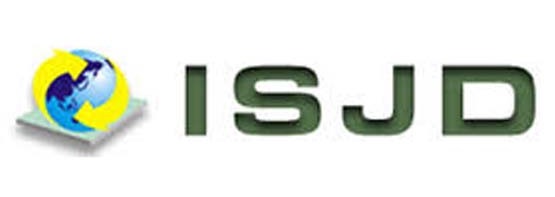UTILIZATION OF BLACK SOLDIER FLY (HERMETIA ILLUCENS) AS A PROBLEM SOLVE OF ORGANIC WASTE
Abstract
Full Text:
PDF (Bahasa Indonesia)References
Diener, S., Solano, N.M.S., Gutiérrez, F.R., Zurbrügg,C.,Tockner, K. 2011. Biological Treatment of Municipal Organic Waste using Black Soldier Fly Larvae. Waste Biomass Valor, 2: 357-363.
Tchobanoglous, G., Theisen, H., Vigil, S. 1993. Integrated Solid Waste Management: Engineering Principles and Management Issues. Mc Graw-Hill, Inc.
Anonim. 2008. Undang-undang Republik Indonesia Nomor 18 Tahun 2008 tentang Pengelolaan Sampah. Jakarta: Sekretariat Negara.
Dortmans B. 2015. Valorisation of organic waste-Effect of the feeding regime on process parameters in a continuous black soldier fly larvae composting system [theses]. Swedish (SE): University of Agricultural Sciences.
Suyanto E, Soetarto E, Sumardjo, Hardjomidjojo H. 2015. Model kebijakan pengelolaan sampah berbasis partisipasi “Green Community” mendukung kota hijau. Mimbar. 31(1):143-152.
Kanwal, S., Iram, S., Khan, M. and Ahmad, I. 2011. Aerobic composting of water lettuce for preparation of phosphorus enriched organic manure. African Journal of Microbiology Research Vol. 5(14). pp. 1784-1793.
Popa, R. dan Green, T. 2012. DipTerra LCC e-Book ‘Black Soldier Fly Applications’. DipTerra LCC.
Guerero, L. A., Maas, G., Hogland, W. 2013. Solid Waste Management Challenges For Cities In Developing Countries- Review. Waste Management Journal. Vol 33(1): 220 – 232.
Badan Pengkajian dan Penerapan Teknologi. 2010. Evolusi Teknologi Pengolahan Sampah (http://www.enviro.bppt.go.id/Berita/Data/25052010.htm, diakses pada 4 September pukul 15.49 WIB).
Kusnadi, Syulasmi, A., Adisendjaja, Y.H. 2009. Laporan Penelitian Strategis Nasional Tahun Anggaran 2009 (Energi Terbarukan): ‘Pemanfaatan Sampah Organik Sebagai Bahan Baku Produksi Bioetanol Sebagai Energi Alternatif’. Bandung : Jurusan Pendidikan Biologi Fakultas Pendidikan Matematika dan Ilmu Pengetahuan Alam UPI.
Diener, S. 2010. A Disertation: Valorisation of Organic Solid Waste using the Black Soldier Fly, Hermetia illucens, in Low and Middle-Income Countries. Swiss: ETH Zurich.
Newton, L., Sheppard, C., Watson, D.W., Burtle, G., Dove, R. 2005. Using The Black Soldier Fly, Hermetia Illucens, As A Value-Added Tool For The Management Of Swine Manure. California: North California Animal and Poultry Waste Management Center.
Kroes, K. 2012. Thesis: Design and Evaluation of A Black Soldier Fly (Hermetia illucens) Rearing System. Belanda: Wageningen University.
Sheppard. C.D., Newton, G.L., Thompson, S.A., Savage, S. 1994. A Value Added Manure Management System Using the Black Soldier Fly. Bioresource Technology 50: 275-279.
Selintung, M., Zubair, A., Anneke, E. T.2013. Skripsi: ’Studi Karakteristik Sampah Pada Tempat Pembuangan Akhir Di Kabupaten Maros’. Makassar: Universitas Hasanudin.
Sawyer, C.N., McCarthy, P.L., Parkin, G.F., 1994. Chemistry for Environmental Engineering and Science, 4th ed. McGraw-Hill International Edition, New York, pp. 365–577.
Alvarez, L. 2012. A Dissertation: The Role of Black Soldier Fly, Hermetia illucens (L.) (Diptera: Stratiomyidae) in Sustainable Management in Northern Climates. University of Windsor. Ontario.
Gaudy, A.F, dan Gaudy, E.T. 1980. Microbiology for Environmental Engineering Scientist and Engineers. New York: John Wiley & Sons Inc.
Mirwan M. 2013. Optimasi pengomposan sampah kebun dengan variasi aerasi dan penambahan kotoran sapi sebagai bioaktivator. Jurnal Ilmiah Teknik Lingkungan 4(1):61-66.
DOI: http://dx.doi.org/10.32883/hcj.v5i4.994
Refbacks
- There are currently no refbacks.

This work is licensed under a Creative Commons Attribution 4.0 International License.
HUMAN CARE JOURNAL
Published by Universitas Fort De Kock, Bukittinggi, Indonesia
© Human Care Journal e-ISSN : 2528-665X P-ISSN : 2685-5798














